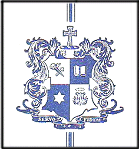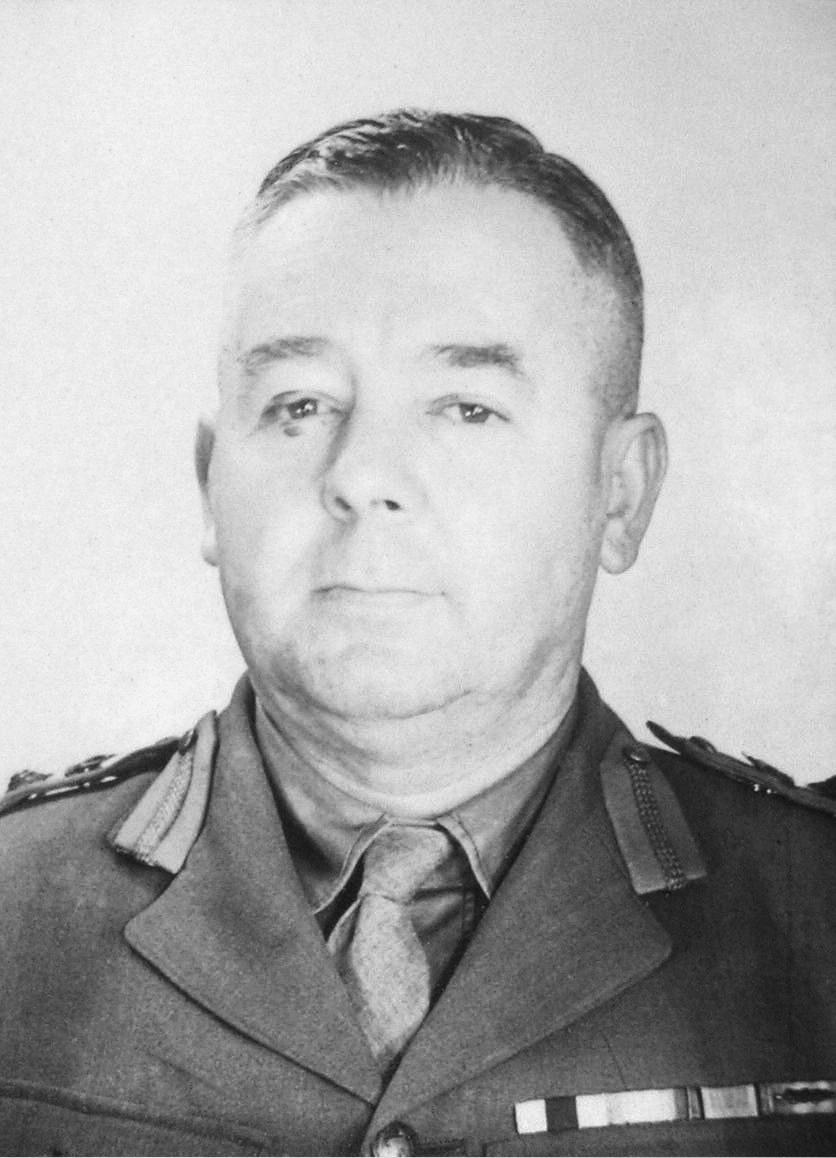
MBHS Darlinghurst ~
Historical Tributes ....
Brig. Frederic Brock HINTON OBE MC ED JP
Distinguished Soldier, Alderman, Farming Expert & Advocate for
Ex-servicemen
Frederic Brock Hinton was born on the 16th of October 1892 at
Parramatta, New South Wales, the son of Elizabeth Brock Friendship and
Arthur Langley Hinton. Arthur Hinton was an accountant and one-time
Alderman of Parramatta, and young Frederic was destined to follow his
fathers’ example of public service throughout his life. Frederic was
taught at state schools and the Fort Street High School, Petersham until
the last three years of his education when he attended the Marist
Brothers School at St. Mary’s Cathedral. After finishing high school, he
studied farming and agriculture and was awarded a scholarship to Wagga
Experimental Farm, where he graduated Dux at the end of two years.
Hinton enlisted in the Australian Imperial Force at the outbreak of the
First World War in 1914, and after first being rejected as too short
from the 6th Light Horse he joined the famed 7th
Light Horse regiment. Before leaving for the Middle East he married his
sweetheart Irene in October 1914, with whom he had a daughter named
Eunice. Trooper Hinton was promoted to Sergeant whilst en route to Egypt
in December that year, and later served at Gallipoli for nine months. He
proceeded from Gallipoli to France in 1916 and was attached to the 12th
Machine Gun Company. In August 1916 the newly promoted Captain Hinton
found himself in command of a company of men at the front after their
commanding Officer was shot, and he was subsequently recommended for a
Military Cross (MC) by Brigadier General Duncan Glasfurd;
“For thorough good work in training the Company… and commanding it
action at POZIERES… when the Company Commander was incapacitated.”
He was promoted to Major at Passchendaele and was Mentioned in
Despatches twice. After being discharged from the Army in 1919 he
continued his education in farming in the United Kingdom at Leeds
University and Bradford Technical College, and in 1920 was appointed as
a Sheep and Wool Expert within the NSW Department of Agriculture.
Hinton eventually left government service, bought a grazing property and
settled in the town of Canowindra in country NSW. There he became a
prominent member of the community; being elected to the Waugoola (now
Cowra) Shire Council in 1926 and serving for twelve years – two of them
as Shire President*. Hinton was appointed a Justice of the Peace (JP) in
1926, served as Coroner for Canowindra and represented NSW as Honorary
Vice-Consul for Haiti for four years. His knowledge and expertise in
Sheep farming made him a respected Judge of sheep in Agricultural shows
and competitions, and he won the Championship for Fodder Conservation at
the Royal Agricultural Show three times. Hinton served for five years as
Vice-President of the British Sheepbreeders Association of Australia,
and also as Vice-President of the Longwool Sheepbreeders Association.
Throughout the years between the World Wars, Major Hinton remained in
the Citizens Military Force and held various positions of command,
including the 6th Light Horse Regiment at Orange for four 4
years (during the Depression) and the 4th Cavalry Brigade. He
was promoted several times - ultimately to the rank of Brigadier in
1938. With the clouds of war looming, in 1939 he proceeded to the United
Kingdom to undertake various attachments in the British Army, including
in the Coldstream Guards, Irish Guards, Cheshire Yeomanry and the 17th
Lancers.
Brigadier Hinton entered active service again after the outbreak of the
Second World War and in 1940 was appointed to command the Recruitment
Reception Depot at Sydney Showground, where the strength of men rose to
over ten thousand. In 1941
he was appointed to command a new Commando Force, but this appointment
was superseded when Major General [later Lieutenant General Sir] John
Northcott ordered the formation of the 1st Armoured Division
that July. Unfortunately, Brigadier Hinton’s military service came to an
abrupt end when he suffered the first in a series of heart attacks in
1942, and his years of
meritorious
service were recognised by the award of the Efficiency Decoration (ED)
following his retirement.
Despite lingering heart problems, Brigadier Hinton devoted himself to
multiple charitable organizations for the rest of his life, and he was
an active President, Patron or Life Member of many of them. In
particular he worked unremittingly for the welfare of returned soldiers
and set up ex-servicemen’s associations that continue to run today –
most notably the Royal Australian Armoured Corps Association, of which
he was Foundation President and later Patron. The “F.B. Hinton
Scholarship Trust” survives to this day as a permanent memorial
of his service to the R.A.A.C.A. Brigadier Hinton was the first person
to call meetings of all Australian ex-servicemen’s Associations to form
a committee, and he travelled to New York, Paris and London to support
the World Veterans Federation. He was also elected to the Royal Humane
and Shipwreck Society and the Good Neighbour Council, and was a strong
anti-communist. An active supporter of the School Cadet Movement, he
regularly visited Marist Brothers High School, Darlinghurst and other
schools to inspect the Military Cadets on parade and to present awards.
For his prolific civic service to ex-servicemen’s organizations and the
community, Brigadier Hinton was made an Officer of the Order of the
British Empire (OBE, Civil Division) in the Queen’s Birthday Honours
List in 1968. He died less than a year later in England on the 9th
of May 1969; a credit to his old school and to the nation to which he
had given lifelong service.
Earlier photograph as Major Fred Hinton MC.
Photos courtesy of S.D. Coleman & M.C.C. archives
Historian: Scott Coleman
Email: scottandrhondacoleman(a)live.com.au
